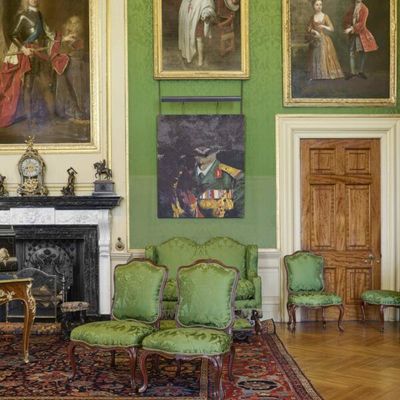AS the summer opening hours of the Ulster Museum commence, we consider two reasons to visit the Ulster Museum.
Once while running a women's development programme on the lower Ormeau, a mum told me she used to tell her child that going on holidays was a visit to the Ulster Museum. The adventure of walking up to the museum through Botanic sufficed in the child's eye. Especially in the summer months when there are child-focused activities.
One specific exhibition of interest to a wider audience is 'Threads of Empowerment: Conflict Textiles' International Journey'. Roberta Bacic, curator of the collection which includes over 400 artworks, explained: "When words are not enough to express experiences of violence, stitching and sewing can emerge as a language."
The exhibition displays 29 textiles from communities and individuals around the world who have experienced oppression, poverty, violence and conflict human rights and environmental injustices.
Some are arpilleras, first developed during the Pinochet regime in Chile when women would applique (a traditional decorative needlework technique) on to hessian, relaying their experiences of oppression and violence. In many cases these textiles were sent out of the country and helped alert the international community to what was going on inside the country.
In 2022, National Museums NI acquired 14 pieces from the conflict collection, noting the significance of conflict textiles as an art form, helping people reflect and consider the world we live in and the issues still being experienced today. Around 15 years ago at a women's conference I had the opportunity to experience a workshop on conflict textiles and we were encouraged to make a piece around something we felt was important. While some at the conference sneered about the gendering of the traditional art form of sewing, others embraced the opportunity of having some time and resources to reflect on lived experience. The results were varied and eye-opening.
Works from Zimbabwe, Peru, Chile, Germany, Argentina and Mexico are on display. In Donde Estan Nuestros Hijos?/Where are our Chlldren (Chile, 1979) a mother kneels, flanked by two policemen, a peace dove hovering overhead while the Chilean secret police interrogate her. Cassettes del Exilio/Cassettes of Exile tell the story of Jimena Pardo, whose parents were detained in detention centres then expelled to England. Cassettes were sent back and forth to keep the family connection with Chile – and they are beautifully sewed into the arpillera.
Culture overload Caravaggio #conflicttextiles @ulstermuseum and the world premier of ‘ the ban ‘ a documentary about the broadcast ban on TV #strangeworld @belfastphoto in Botanic and people chilling pic.twitter.com/dzdz1FTdgZ
— Bronagh Lawson (@CreativChangeNI) June 24, 2024
This exhibition is a must-see for lovers of the art from and for those who feel that textiles are too soft a medium for such hard-hitting subjects as torture or violence. A visit might help change your view.
Also at the museum, on loan from the National Gallery London and National Gallery of Ireland, are two Michelangelo Merisi da Caravaggio paintings with religious narratives. Born near Milan and known simply now as Caravaggio, the artist moved to Rome when it was the artistic centre of the world. He painted the two paintings on display – The Supper at Emmaeus (1601) and The Taking of Christ (1602) – for Roman nobleman Ciriaco Mattei. This is one of the few occasions that they have been reunited. The first painting found its what to the National Gallery London in 1839 while the other entered a Scottish collection and was later given to the Dublin Jesuit community. Since being recognised as a Caravaggio in 1993, the painting has been on loan to the National Gallery of Ireland.
MASTERPIECE: Caravaggio's The Taking of Christ is on view at the Ulster Museum
A few years after completing these paintings the artist – notorious as an artistic 'bad boy' – fled Rome after being involved in a fatal stabbing. On the run and pursued for murder, he moved between Naples, Malta and Sicily. I once saw in Malta his magnificent painting, The Beheading of the Baptist, 20 metres wide and 3.5 metres high. His work got more violent and dark as he sought a Papal pardon that never came before his death.
Conflict Textiles runs until April 2025 and the Caravaggios are on display until September 1.







